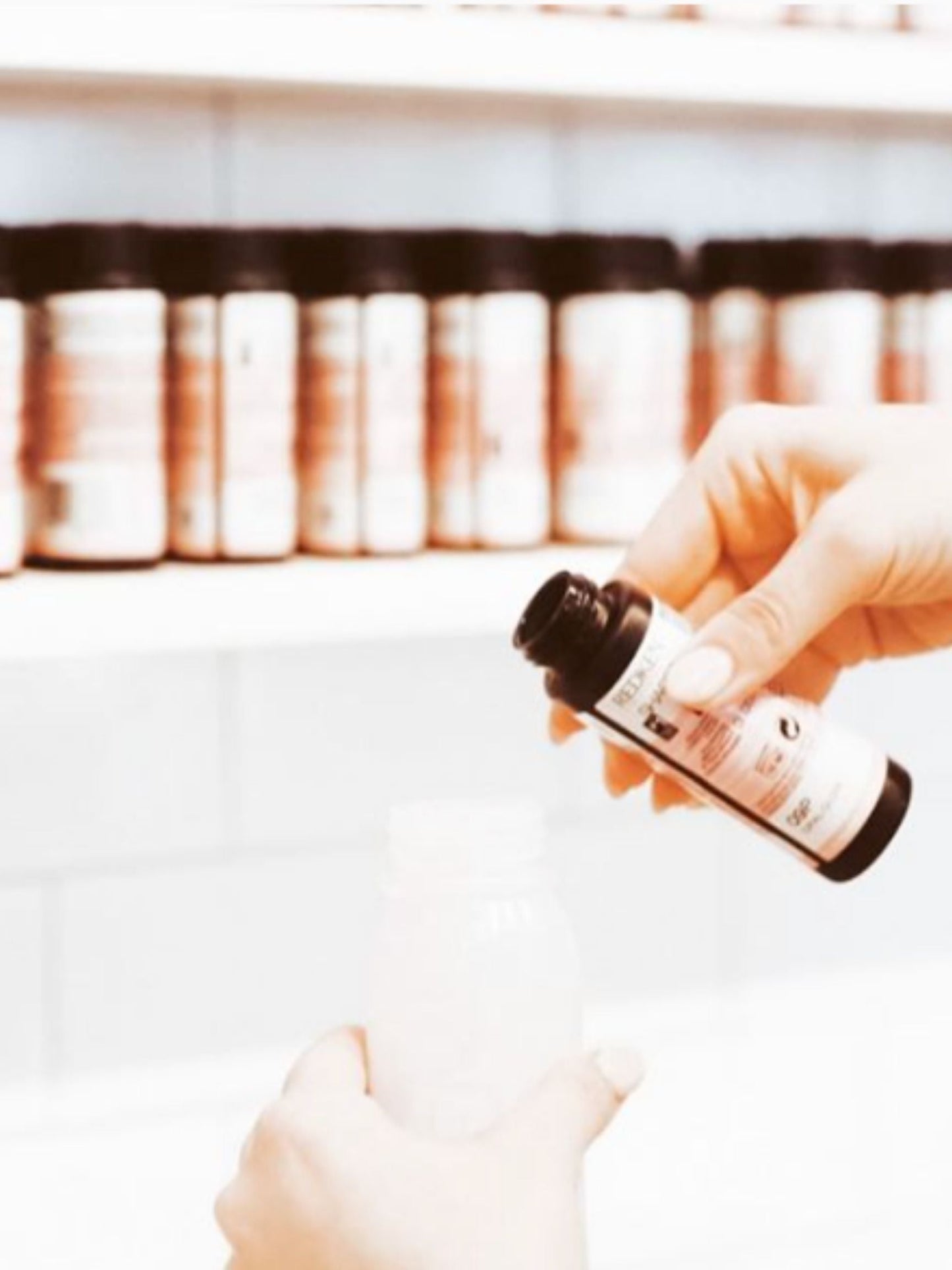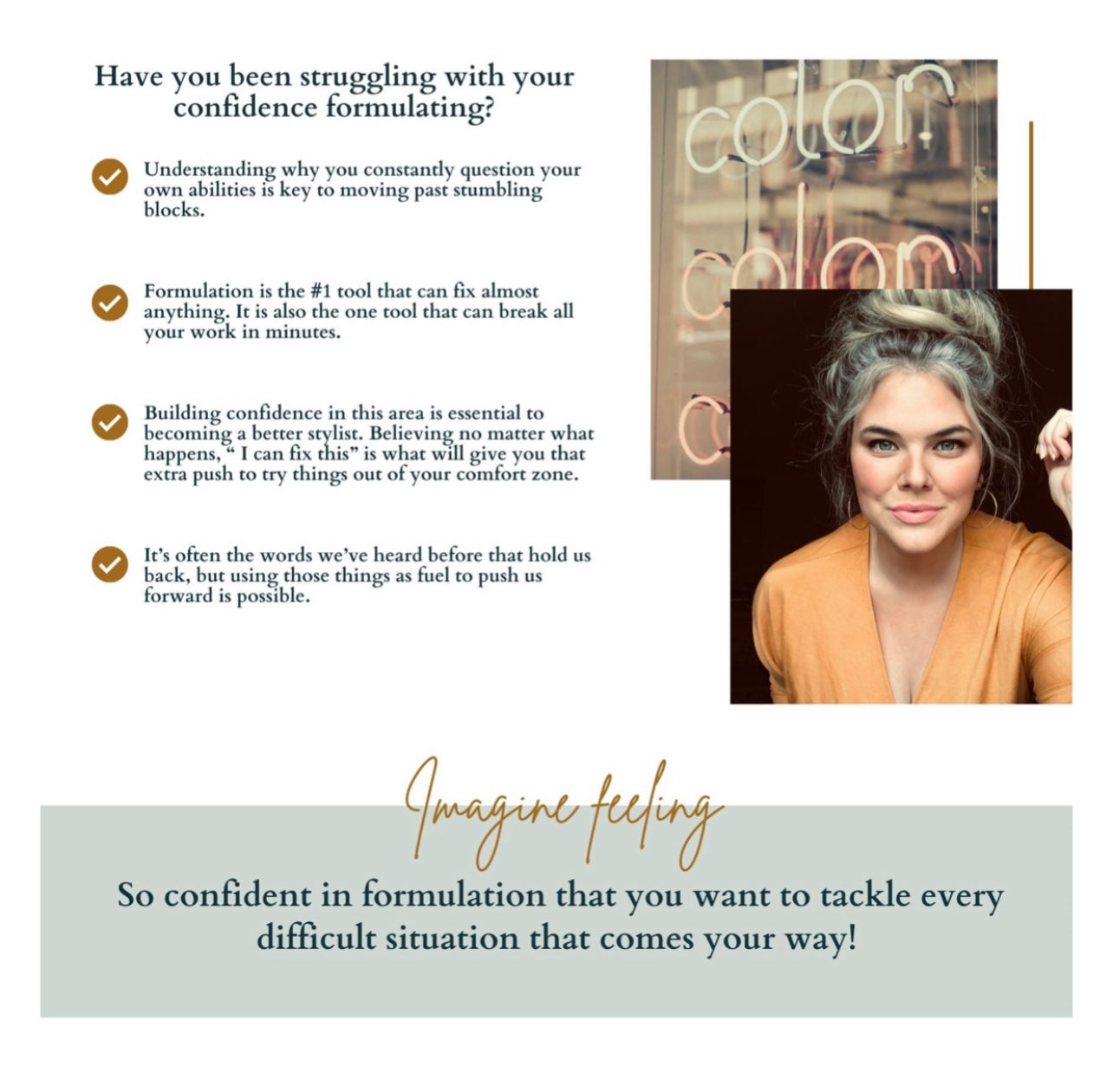
Mastering the Art of Hair Color Formulation
We understand—formulating hair color isn't always a walk in the park. Often, it's the intimidation factor that prevents stylists from perfecting their craft. With so many variables influencing the final result, it might seem like an unsolvable puzzle.
While it may seem simpler to stick to tried-and-true methods because they’ve worked in the past, it's vital to enhance your formulation skills and build confidence to elevate your services. By familiarizing yourself with color theory and understanding the various components of color, any stylist can excel in formulation.
Formulating is far more than just mixing colors. There are countless factors to consider, but here are six key considerations to keep in mind when formulating hair color.
Factors to Consider When Formulating Hair Color
-
The Hair Consultation
If you're acquainted with Color Collective, you know the emphasis we place on hair consultations—and for good reason! Properly analyzing the hair is the first step to crafting a stunning color and is essential for effective formulation. Whether assessing damage, mineral buildup, tonal issues, the client's lifestyle, the level of lift, or simply the natural hair color, each aspect requires careful consideration. - Skipping the consultation or neglecting it altogether can lead to a disastrous appointment over something as minor as miscommunicating the desired brightness around the face. Taking the time to understand during this phase will keep everyone informed and confident throughout the process.
- Use the consultation to manage your client’s expectations. Nobody wants to be disappointed—neither stylist nor client. Setting realistic expectations allows you to provide the best options for their hair, ensuring they leave the salon feeling beautiful.
-
Damage
If your hair consultation reveals significant damage to the client’s hair, this should influence your color formulation. In such cases, you might need to focus more on tonal adjustments than lifting. This approach helps prevent further damage and gives the hair a chance to heal. -
Minerals
Mineral buildup is another crucial factor often overlooked in hair color formulation. It's typically the result of washing with hard water, causing elements like calcium and magnesium to accumulate on the cuticle. If the hair has mineral buildup—or feels greasy or gritty with no shine—it can result in a color that is up to two levels darker or lighter than desired. - To avoid unwanted shifts in your formula, perform a demineralizing treatment if you suspect your client has mineral buildup.
-
Tonal Issues
When a client presents multiple tonal issues, it’s wise to tackle one issue per appointment. Attempting to address every issue simultaneously can leave both you and your client disappointed. - To envision a finished tone, consider all tones and levels in the hair as a whole. For instance, a natural level five with golden tones might lift to a higher raw lift, allowing you to gloss cooler. However, ensure that all levels and tones harmonize. Thinking beyond the raw lift before you helps create a more interesting finish.
-
Porosity
Porosity refers to how open or closed the hair cuticle is, affecting its ability to absorb moisture and color. Understanding your client’s porosity level is crucial, as it can significantly impact your gloss if you're unprepared. - Porous hair absorbs color quickly but not accurately. Thus, you’ll need to apply a porosity equalizer or add a clear component to your gloss to counteract color changes. Generally, you may need more warmth in your formula for such situations.
-
The Client’s Lifestyle
In addition to assessing the current condition of the client’s hair, consider how their lifestyle might influence the outcome. For example, if they wash their hair daily, exercise frequently, or spend ample time in the sun, certain tones may not be suitable. Cooler tones tend to fade easily, which should be communicated when selecting the best tone for them. - Consider factors like the client’s eye color and skin tone to formulate a color that complements their natural features.
Getting Comfortable with Formulation
Ultimately, numerous factors contribute to successful formulation, and each step taken toward accurate formulation enhances your final result. Blindly applying a formula because “it worked before” could be your biggest adversary. Understanding the "why" behind formulation benefits both you and your client.
When mistakes happen—and they will—try to learn from them rather than becoming frustrated. Instead of assuming the client is wrong, be open to their feedback to prevent similar situations in the future. Even if a mishap arises from miscommunication, turning it into a learning opportunity will foster a better mindset.
Finally, don't shy away from trying new things! It’s easy to fall into the habit of sticking to what you know, but this can stifle learning. Even if you’re unsure why something might work and assume you won't like it, test it on a swatch or mannequin. Mistakes are permissible on mannequins, so seize the opportunity to experiment.
If you still find yourself struggling, sign up for any classes that will help in the area you're looking to develop. However, don’t assume that just one class will fix it all. It takes an average of hearing something 7-10 times for someone to absorb and accept a certain idea. Generally when you take a class you only retain and use about 10% of the information covered. Keep getting involved until you really grasp what you’re trying to do.
Have you been struggling with your confidence when it comes to formulation? Building confidence in this area is the key to becoming a better stylist, empowering you to deliver the results that your clients are looking for. Sign up for the new Confidence Behind Formulation course with Christine, where you'll learn the fundamentals of color theory and real, tactical skills that will allow you to formulate with the confidence that you need!
